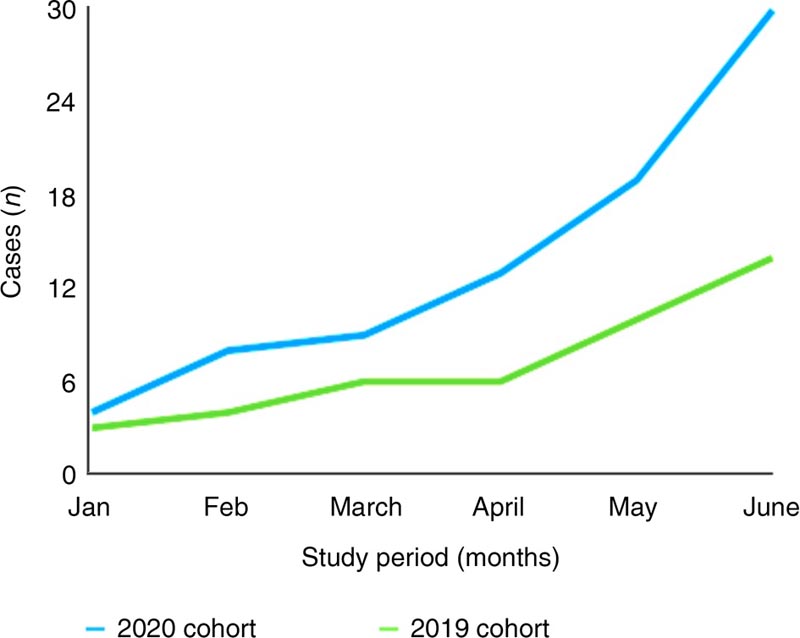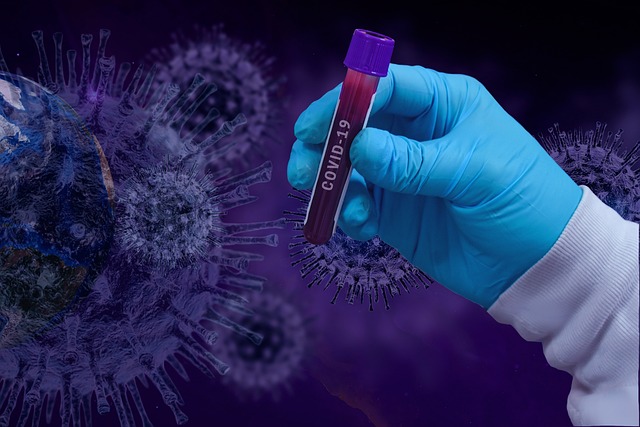An increase in spontaneous paralyses of the lower motor neurons of the facial nerve (cranial nerve VII) was observed during the severe acute respiratory syndrome coronavirus 2 outbreak in our emergency clinic. This led us to conduct a single-center cohort review. Methods A retrospective review of VII cranial nerve palsies was performed from January to June 2020 and findings were compared to cases reviewed in the previous year. The cohort’s severe acute respiratory syndrome coronavirus 2 incidence was compared to that of the Liverpool population. Results Our 7th cranial nerve palsy incidence in 2020 was 3.5 percent (30 of 852), 2.7 higher than last year’s rate of 1.3 percent (14 of 1,081), which was a statistically significant difference (p <0.01). Two of the 17 patients in our cohort tested positive for severe acute respiratory syndrome coronavirus 2 (11.8%), in contrast to the incidence of Liverpool severe acute respiratory syndrome coronavirus 2 (0.5%). Conclusion Coronavirus 2, severe acute respiratory syndrome, may be responsible for an increased number of facial nerve paralysis. It is important for physicians to be aware that this may be an initial presentation of the disease. |
Comments
Throughout the COVID-19 pandemic, numerous medical centers have cited a number of neurological and multi-organ complications. In emergency ear, nose and throat clinics, our clinical team was alarmed by the high rates of spontaneous facial nerve lower motor neuron palsy (VII) referrals received.
Cranial nerve VII palsy is thought to be a virus-induced inflammatory reaction, although the exact mechanisms remain uncertain.
A course of steroids is the recommended treatment, with a good prognosis.
From a literature search, we noted two case reports of peripheral nerve palsies and possible facial nerve paralysis secondary to the infamous Severe Acute Respiratory Syndrome Coronavirus 2 (SARS-CoV-2). This led us to conduct a retrospective review of patients with VII palsy encountered over a six-month period.
We found?
30 of the 852 patients seen at the clinic suffered from VII palsy in the six-month period from January to June 2020. This is more than double the number of patients seen in the same six-month period in 2019 (14 of 1081 patients).
25 patients attended their follow-up appointment. 72% (18/25) showed complete resolution of their symptoms, while 24% (6/25) of patients improved. The remaining 3 patients were booked for further follow-up appointments, with no improvement in symptoms.
SARS-CoV-2 testing was performed on 17 patients, and 2 (6%) returned a positive result. Additionally, we compared the incidence of COVID-19 in our cohort with that of the NHS hospital catchment area (2412 cases recorded in Liverpool’s population of 498,042). This showed a significant difference between (6% vs. 0.5%).

Cumulative cases of facial nerve paralysis over six months.
What does this imply?
It is difficult to conclude with certainty that COVID-19 is the reason behind this steep slope in VII cases, due to our small sample size. While only 57% (17/30) agreed to be tested for SARS-CoV-2, 12% (2/17) tested positive, which may be an underestimation if the rest of the cohort agreed to be tested. proof.
Several mechanisms have been proposed to explain the involvement of COVID-19. Indirect nerve insult through activation of enzymes triggered by the body’s immune system and direct invasion with resulting nerve damage inflicted by the virus are two explanations postulated by the medical community.
One study also showed a link between high levels of anxiety and seventh palsy, and our suspect also potentially contributed to this.
What has happened since then?
Since then, more case reports and series have been published, raising even more suspicions that COVID-19 is to blame for rising rates of VII palsy. A prospective study of 41 patients by Islamoglu et al. in 2021 reaffirmed our findings, with a higher prevalence rate of SARS-CoV-2 in the seventh paralysis group compared to their control groups.
Given that COVID-19 is the prime suspect behind the rise in VII palsies, we urge clinicians to be wary of this being one of the presentations of a SARS-CoV-2 infection.
















